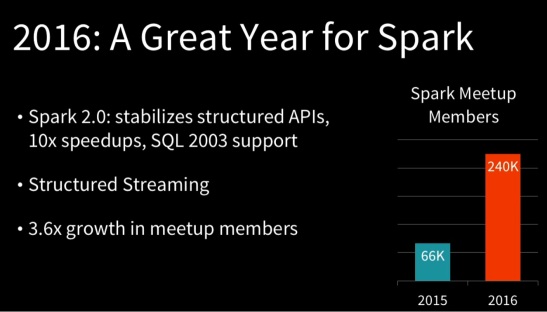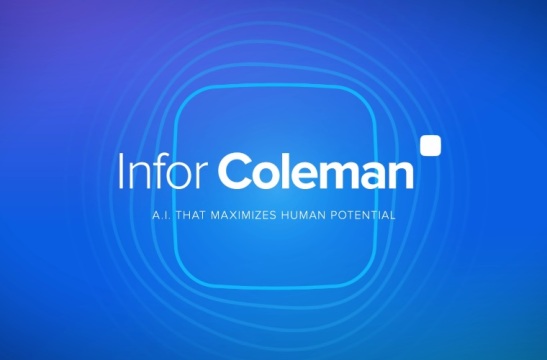Teradata is thinking outside of box sales with VMware, AWS and Azure deployment options and new solutions and consulting services.
At this week’s Teradata Partners Conference in Atlanta the company hit several important cloud milestones with its “Teradata Everywhere” and “Borderless Analytics” announcements. And in another sign that it’s evolving, Teradata also announced a range of analytic solutions supported by consulting services.
Teradata Everywhere is the ability to run the same database and workloads without alteration in multiple deployment environments. The choices include on-premises systems, VMWare-based private-cloud instances, Teradata’s Managed Cloud services and Teradata Database on public clouds including Amazon Web Services and, by year end, Microsoft Azure.
Teradata Amps Up Cloud & Consulting from Constellation Research on Vimeo.
The newest options here are Teradata on VMware and parallel processing support on Amazon Web Services. The Teradata Database on AWS offering was introduced earlier this year, but it was initially limited to single-node deployment. Now you can exploit the power of massively parallel processing on up to 32 nodes, and Teradata says it will keep raising the node ceiling. MPP deployment on Microsoft Azure is set for the fourth quarter.
MyPOV on Teradata Everywhere. Teradata pre-announced most of these offerings last year, but it’s good to see it following through on both MPP (without that, what’s the point of using Teradata?) and Microsoft Azure. What was surprising was seeing an Amazon Web Services exec keynoting at Partners. That’s a good sign that Teradata is truly embracing the cloud, but I think the VMware option will be even more popular than the public cloud options -– at least for existing customers. For now, VMware deployment is capped at eight virtual servers and 32 virtual nodes, but that’s big capacity and Teradata says server and node capacities will increase over time.
Software Supports ‘Borderless Analytics’
It’s all well and good to have multiple deployment options, but the key to hybrid success is flexible data-access, querying and systems management. The borderless concept is supported by the latest versions of Teradata QueryGrid, for accessing data across heterogeneous environments, and Teradata Unity, for automated workload orchestration across multiple Teradata systems.
QueryGrid already supported unified access and querying against Teradata, Teradata Aster, third-party relational databases, Hadoop, and analytic compute clusters. That support extends to cloud instances of these sources. QueryGrid brought together what were separate Teradata-to-Hadoop, Teradata-to-Oracle and Teradata-to-Aster connectors. A rewrite due out by year end will unify the underlying architecture so there will be single connectors for each target system instead of multiple connectors. The new version will deliver better and more consistent query performance, and, according to Teradata, better support for security, encryption and performance monitoring across all sources.
Teradata Unity software automates workload distribution to ensure high availability and query performance within service-level demands. The latest release extends that workload balancing capability across on-prem, private, managed and public cloud Teradata instances. A Unity upgrade expected in the first half of 2017 will capture data changes on one Teradata system and automatically copy them to other Teradata systems. This will support cloud-based backup and disaster recovery use cases, for example, by automatically keeping on-premises and cloud-based systems in sync.
MyPOV on Borderless Analytics. QueryGrid is very popular among Teradata customers. Most connections are bidirectional, and it can push down queries into source systems including Hadoop to reduce overall query times. Unity is an extra-cost option, but the automation and workload distribution capabilities are hugely helpful when running multiple Teradata systems. As companies tap cloud instances, they’ll use Unity to support bursting scenarios wherein they seamlessly shift spikey or low-priority workloads into the cloud to better handle peak workloads and meet service-level agreements.
Teradata As Solutions Provider
Teradata got its start by selling to the business, not IT. In his keynote at Partners, Teradata CEO Victor Lund, who was appointed this spring after Mike Koehler was ousted, admitted that the company lost its way in part because it lost sight of selling to business needs. About half of Teradata’s revenue is already tied to solutions and consulting, but that ratio may grow given the Partners announcement of new analytic solutions, methodologies and accelerators backed by Teradata consulting.
Customer Journey Analytic Solution: This offering blends Teradata’s Real-Time Interaction Manager, Customer Interaction Manager and Teradata Aster ensemble analytics to track end-to-end customer paths across channels (email, online, in-store, call center, etc.). It then delivers recommended next-best actions and offers based on historical as well as in-the-moment behaviors.
The Customer Journey Analytic solution is differentiated from similar-sounding offerings in that it addresses on-premises and call-center interaction as well as digital channels, says Teradata. And by incorporating real-time context, you’ll avoid pushing offers when someone just received that offer in a different channel, just purchased or is trying to resolve a service problem and is in no mood to purchase.

RACE Services and Business Value Frameworks: RACE is a Rapid Analytic Consulting Engagement. The first step is aligning with the customer around Business Value Frameworks that provide starting points for high-value use cases. The prebuilt Frameworks define hundreds of analytic use cases, according to Teradata, covering domains including customer and marketing, supply chain, product, operations, and finance and risk. Example use cases include Customer Satisfaction Index and Communications Compliance.
Analytics of Things Accelerators: Based on proven engagements with large industrial companies, these accelerators combine professional services with prebuilt starting-point content including data models, data transformations, analytic models, data visualizations and KPIs. The idea is to speed and take risk out of IoT projects. The first four accelerators are: Condition-Based Maintenance (think predictive maintenance and parts ordering); Manufacturing Performance Optimization (think maximizing equipment uptime); Sensor Data Qualification Accelerator (to determine which sensor data to clean up, filter out and keep); and Visual Anomaly Prospect Accelerator (for detecting actionable patterns in data).
MyPOV on Teradata’s Solutions Focus. Teradata is understandably putting an even bigger emphasis on solutions and consulting given that revenue from on-premises systems is and will remain under pressure. Data warehouse optimization projects are accelerating that trend as companies shift workloads onto Hadoop or cloud options including Teradata’s own services. The shift is one reason Teradata in 2014 acquired ThinkBig Analytics, which specializes in Hadoop and open source services and consulting. In July the company upped the ante by acquiring London-based Big Data Partnership, a startup that provides big data solutions and training.
The open question for Teradata is whether it can grow the pipeline of solutions and consulting engagements even as the pace of on-premises deployments and upgrades declines. New hardware purchases have historically triggered such engagements, so Teradata will have to find new ways to get its foot in the door. Another competitive threat is systems integrators that have typically been Teradata partners but that are ramping up analytics practices of their own. Teradata’s enviable list of existing customers and new cloud engagements are obvious places to look for solution and consulting opportunities.
What was clear at the Partners Conference is that market forces and this year’s leadership change have sparked both new thinking and a back-to-basics focus on business value. That’s leading to innovation and lots of new deployment and solutions options aimed at fast and flexible deployment and delivering value to the business.
Related Reading:
Teradata Disrupts Self With Cloud Push
SAP Reportedly Buying Altiscale to Power Big Data Services
Democratize the Data Lake: Make Big Data Accessible




 Cloudera-developed Apache Impala is a centerpiece of the Analytic DB offering, and it competes with everything from Netezza and Greenplum to cloud-only high-scale analytic databases like Amazon Redshift and Snowflake. HBase is the centerpiece of the Operational DB offering, a high-scale alternative to DB2 and Oracle Database on the one hand and Cassandra, MapR and MemSQL on the other. The Data Science & Engineering option handles data transformation at scale as well as advanced, predictive analysis and machine learning.
Cloudera-developed Apache Impala is a centerpiece of the Analytic DB offering, and it competes with everything from Netezza and Greenplum to cloud-only high-scale analytic databases like Amazon Redshift and Snowflake. HBase is the centerpiece of the Operational DB offering, a high-scale alternative to DB2 and Oracle Database on the one hand and Cassandra, MapR and MemSQL on the other. The Data Science & Engineering option handles data transformation at scale as well as advanced, predictive analysis and machine learning.






















